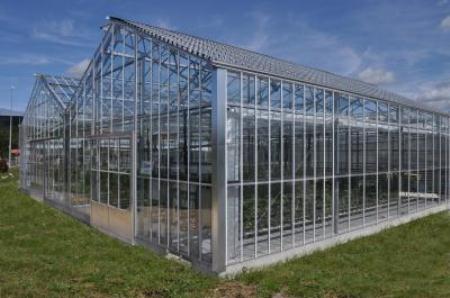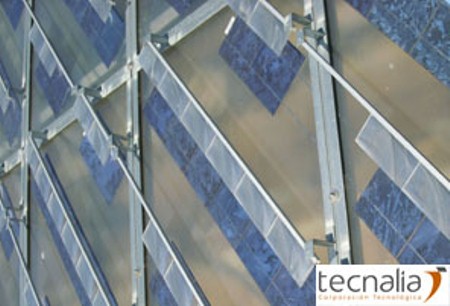The delicate balancing act between energy and agriculture is a challenge for policymakers, especially when it comes to growing biofuels feedstocks and siting large-scale solar and wind farms on prime agricultural land. But there are many examples of small-scale, creative solutions to producing food and renewable energy side-by-side.
Take, for example, this solar double-cropping project in North Carolina, or many of the projects funded by the U.S. Department of Agriculture’s Renewable Energy for America Program (REAP). Small-scale energy solutions like these could be even more useful for farmers in Europe, where electricity prices are higher, and agricultural land is even harder to come by. In the spirit of maximizing the productive capacity of farms, a research consortium in the Basque region of Spain has developed an innovative photovoltaic (PV) greenhouse system that combines a simple power production solution for greenhouses, while managing the amount of light that is delivered to the crops growing inside.

Like a solar tracker, the system takes advantage of the sun’s changing trajectory over the course of the year. However, instead of mechanical solar tracking equipment, the greenhouse system uses a lens-based optical component to direct sunlight. During the critical winter growing months (October-February), the system allows sunlight to enter the greenhouse. During the summer, when solar radiation can be too intense for greenhouse crops, the system diverts sunlight to the PV cells, generating electricity and preventing the greenhouse from overheating.
The technology was a developed by a collaboration between ULMA Agrícola and Tecnalia. The product is undergoing testing in Derio (Bizkaia, Basque Country). Over the summer, the group tested the system on a greenhouse growing tomatoes and peppers – these are two of the most commonly grown greenhouse crops worldwide, and they require a large amount of light. The team measured the most critical parameters of the crops, such as radiation, humidity and temperature. They compared crop quality and PV production to data obtained under a normal glass roof.

According to ULMA Agrícola, the summer tests achieved positive results, including a 15 percent annual increase in PV production over a standard fixed-tilt PV system. Testing for performance under winter conditions has been under way since mid-November, and is scheduled to be completed by the end of March. Once the results are validated in the field, ULMA Agrícola aims to have a product ready to be marketed by the second half of 2012.
ULMA Agrícola is a member company of the Mondragon Corporation, a federation of worker-owned cooperatives that have a unique business structure, based on democratic principles and cooperative ownership. Mondragon is the seventh-largest corporation in Spain, and the largest business organization in the Basque region.